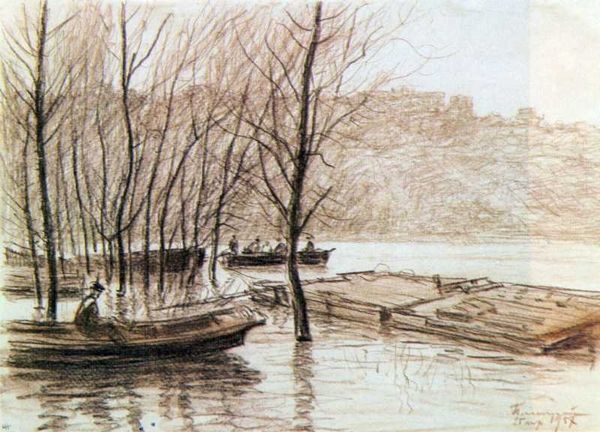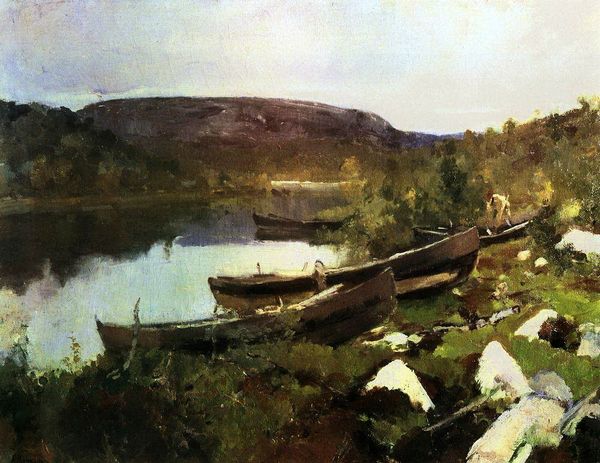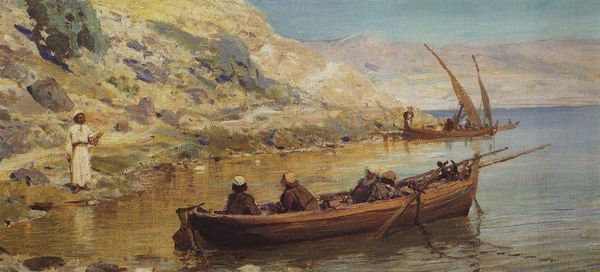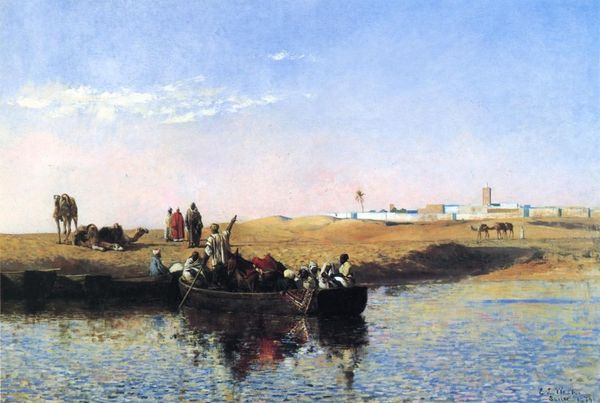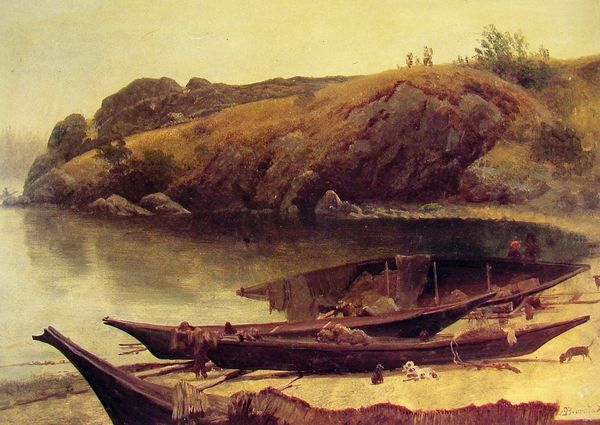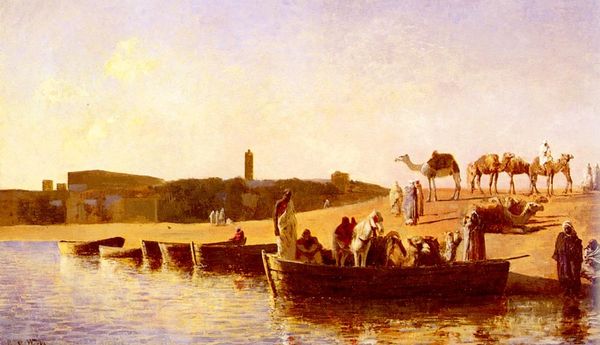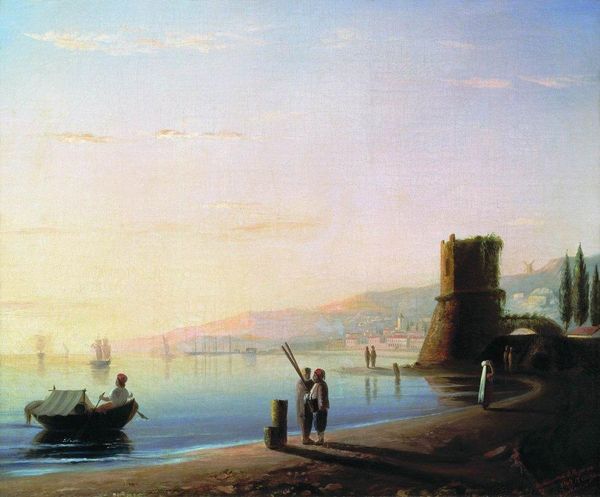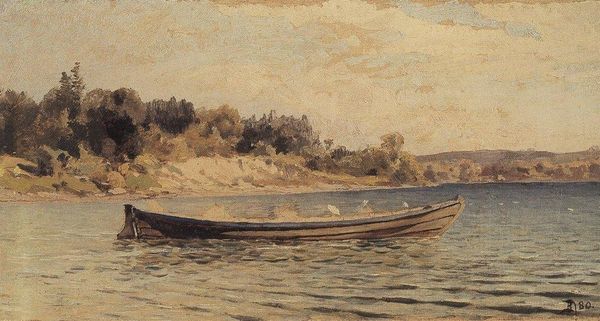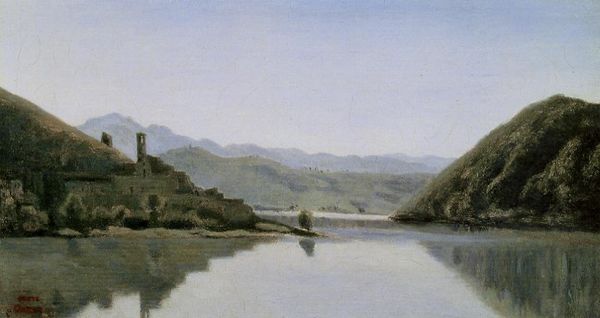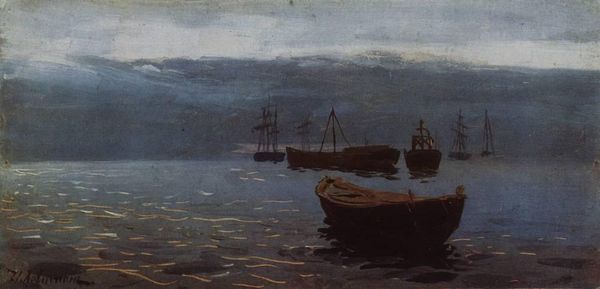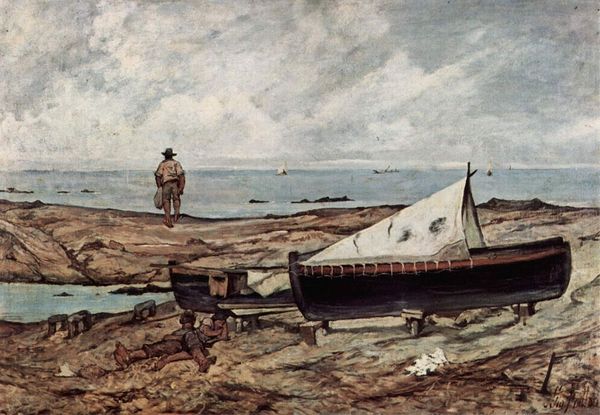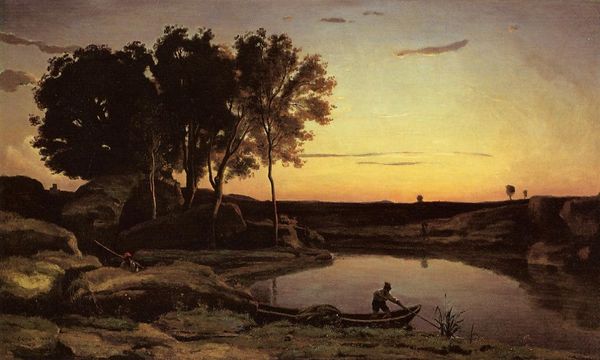
painting, plein-air, oil-paint
#
scenic
#
boat
#
painting
#
impressionism
#
plein-air
#
oil-paint
#
landscape
#
river
#
nature
#
outdoor photography
#
water
#
nature
#
realism
Copyright: Public domain
Curator: Here we have Isaac Levitan's "On the River Volga," painted in 1888. What are your first thoughts? Editor: It evokes a sense of quiet melancholy. The muted palette and the stillness of the water... it almost feels like a memory fading. Curator: Indeed. Note how Levitan masterfully uses a limited color range to construct the space. Observe the horizon line bisecting the canvas, establishing a clear division between earth and sky, between the material and the ethereal. The placement of those boats directs our eye back and forth... Editor: I see that. The Volga River itself had immense cultural significance for Russia, right? It was a source of livelihood and transportation. To me, the boats grounded on the shore speak to a pause in activity, a community resting or perhaps struggling with a shifting economy tied to the river’s ebbs and flows. What's your opinion about these figures and the horizon-cutting placement of the shore? Curator: In formalist terms, one might view that as a commentary on Romanticism's earlier landscape apotheosis, as an attempt to show not a glorification, but instead a human element, while respecting pictorial depth and structural integrity... Look closely at the rendering of light across the water’s surface – how it fragments, scatters. These nuances underscore a mastery of light and shadow. It's the formal qualities here that contribute to the piece’s impact. Editor: But the human presence can't be denied! Even beyond the workers, Levitan seems to evoke the unseen labor and lives dependent on the Volga. There's a definite undercurrent that prompts broader discussions around class and resource use during that time in Russia. Curator: Granted, and while socio-historical context informs our understanding, I emphasize Levitan’s command of composition; how he leads the viewer through tonal gradations toward a distant point in the image. Editor: Right, the brushwork guides us, even invites us to consider what possibilities may lie in what is reflected on the surface of the river. It shows how something so central could also inspire art. The painting, in a way, urges its own action—a viewing practice that’s both formally appreciative and actively curious about socio-historical impact. Curator: A stimulating way of bridging approaches to appreciate its artistic intention.
Comments
No comments
Be the first to comment and join the conversation on the ultimate creative platform.
